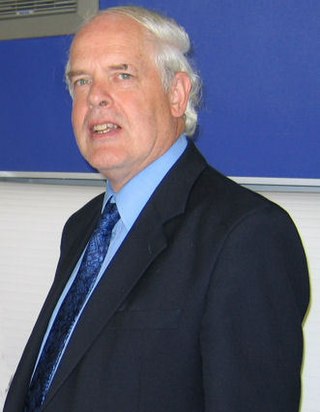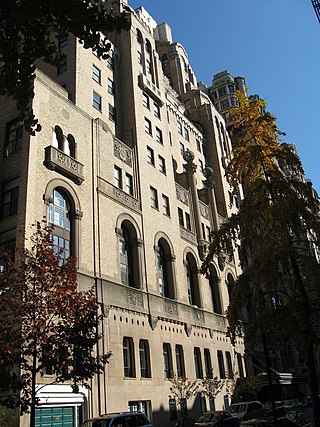
Freemasonry or Masonry refers to fraternal organisations that trace their origins to the local guilds of stonemasons that, from the end of the 14th century, regulated the qualifications of stonemasons and their interaction with authorities and clients. Modern Freemasonry broadly consists of two main recognition groups: Regular Freemasonry, which insists that a volume of scripture be open in a working lodge, that every member professes belief in a Supreme Being, that no women be admitted, and that the discussion of religion and politics do not take place within the lodge; and Continental Freemasonry, which consists of the jurisdictions that have removed some, or all, of these restrictions.
Hiram I was the Phoenician king of Tyre according to the Hebrew Bible. His regnal years have been calculated by some as 980 to 947 BC, in succession to his father, Abibaal. Hiram was succeeded as king of Tyre by his son Baal-Eser I. Hiram is also mentioned in the writings of Menander of Ephesus, as preserved in Josephus's Against Apion, which adds to the biblical account. According to Josephus, Hiram lived for 53 years and reigned 34.
The history of Freemasonry encompasses the origins, evolution and defining events of the fraternal organisation known as Freemasonry. It covers three phases. Firstly, the emergence of organised lodges of operative masons during the Middle Ages, then the admission of lay members as "accepted" or "speculative" masons, and finally the evolution of purely speculative lodges, and the emergence of Grand Lodges to govern them. The watershed in this process is generally taken to be the formation of the first Grand Lodge in London in 1717. The two difficulties facing historians are the paucity of written material, even down to the 19th century, and the misinformation generated by masons and non-masons alike from the earliest years.

According to the Bible, Boazand Jachin were two copper, brass or bronze pillars which stood on the porch of Solomon's Temple, the first Temple in Jerusalem. They are used as symbols in Freemasonry and sometimes in religious architecture. They were probably not support structures but free-standing, based on similar pillars found in other nearby temples.

Robert Lomas is a British writer, physicist and business studies academic. He writes primarily about the history of Freemasonry as well as the Neolithic period, ancient engineering, and archaeoastronomy.
The Hiram Key: Pharaohs, Freemasonry, and the Discovery of the Secret Scrolls of Jesus, is a 1996 book by Christopher Knight and Robert Lomas. The authors, both Freemasons, present a theory of the origins of Freemasonry as part of their "true story" of the historical Jesus and the original Jerusalem Church.
There are a number of masonic manuscripts that are important in the study of the emergence of Freemasonry. Most numerous are the Old Charges or Constitutions. These documents outlined a "history" of masonry, tracing its origins to a biblical or classical root, followed by the regulations of the organisation, and the responsibilities of its different grades. More rare are old hand-written copies of ritual, affording a limited understanding of early masonic rites. All of those which pre-date the formation of Grand Lodges are found in Scotland and Ireland, and show such similarity that the Irish rituals are usually assumed to be of Scottish origin. The earliest Minutes of lodges formed before the first Grand Lodge are also located in Scotland. Early records of the first Grand Lodge in 1717 allow an elementary understanding of the immediate pre-Grand Lodge era and some insight into the personalities and events that shaped early-18th-century Freemasonry in Britain.

The Scottish Rite Cathedral in Indianapolis, Indiana is a historic building designed by architect George F. Schreiber and located in downtown Indianapolis. It is owned by the Valley of Indianapolis Scottish Rite, an affiliated body of Freemasonry. It was built between 1927 and 1929 at the cost of $2.5 million. The cathedral is one of the largest Masonic buildings in the world and the largest Scottish Rite building anywhere. It has been described as one of the finest examples of Neo-Gothic architecture in the United States.

The Rectified Scottish Rite (RER), also known as the Rectified Rite or RSR, is a Christian Masonic rite with a long and complex history. It was founded in 1778 at the Convent of Lyon in France under the leadership of Jean-Baptiste Willermoz, who served as the primary architect and driving force behind its formation. It emerged as a reform and restructuring of the earlier Templar Strict Observance system that had spread in Germany and France in the mid-18th century.

La reine de Saba is a grand opera in four or five acts by Charles Gounod to a libretto by Jules Barbier and Michel Carré inspired by Gérard de Nerval's La Reine de Saba, in Le voyage en Orient. It was premiered at the Salle Le Peletier by the Paris Opera on February 28, 1862. The magnificent first production was directed by Eugène Cormon, with costumes designed by Alfred Albert and Paul Lormier, and scenery by Édouard Desplechin, Charles-Antoine Cambon and Joseph Thierry, Hugues Martin, and Joseph Nolau and Auguste Alfred Rubé.

Masonic ritual is the scripted words and actions that are spoken or performed during the degree work in a Masonic lodge. Masonic symbolism is that which is used to illustrate the principles which Freemasonry espouses. Masonic ritual has appeared in a number of contexts within literature including in "The Man Who Would Be King", by Rudyard Kipling, and War and Peace, by Leo Tolstoy.
Replicas of the Jewish Temple are scale models or authentic buildings that attempt to replicate either the Temple of Solomon or the Second Temple in Jerusalem.
The Grand Lodge of British Freemasonry in Germany is a Masonic Grand Lodge in Germany working in the English language and following English Masonic traditions. It was founded as a District Lodge in 1957 and after various transformations was eventually recognised as Grand Lodge in 1980. This Grand Lodge is one of the five United Grand Lodges of Germany (VGLvD). It currently has members from a variety of nations and in addition to the "resident members" in Germany, there are "non-resident members" all over the world. Currently, 19 lodges work under the GL BFG, mainly in North Rhine-Westphalia, but also in Lower Saxony, Hamburg, Munich, Berlin and also near Frankfurt.

The Level Club is a residential building at 253 West 73rd Street on the Upper West Side of Manhattan in New York City. It was built as a men's club by a group of Freemasons in 1927; it served this original function for just about three years. Afterwards, the building was used, in turn, as a hotel and a drug re-hab center. It has now been remodeled as a condominium.

1 Kings 7 is the seventh chapter of the Books of Kings in the Hebrew Bible or the First Book of Kings in the Old Testament of the Christian Bible. The book is a compilation of various annals recording the acts of the kings of Israel and Judah by a Deuteronomic compiler in the seventh century BCE, with a supplement added in the sixth century BCE. This chapter belongs to the section focusing on the reign of Solomon over the unified kingdom of Judah and Israel. The focus of this chapter is the reign of Solomon, the king of Israel.

The Order of Knight-Masons Elect Priests of the Universe or simply Élus Coëns, was a theurgical organisation founded by Martinez de Pasqually. It appeared in France in the second half of the 18th century and is the first branch of Martinist tradition, otherwise known as Martinezism.
Operative Masonry or The Worshipful Society of Free Masons, Rough Masons, Wallers, Slaters, Paviors, Plaisterers and Bricklayers or simply The Operatives is a fraternal guild claiming a history of hundreds of years over which customs, traditions, knowledge and practices were developed and handed down. It is an invitation only, Masonic society dedicated to preserving the history, rituals, and traditions of medieval operative stonemasons guilds in England and Europe that were the precursors to modern speculative Freemasonry.

2 Chronicles 2 is the second chapter of the Second Book of Chronicles the Old Testament of the Christian Bible or of the second part of the Books of Chronicles in the Hebrew Bible. The book is compiled from older sources by an unknown person or group, designated by modern scholars as "the Chronicler", and had the final shape established in late fifth or fourth century BCE. This chapter belongs to the section focusing on the kingship of Solomon. The focus of this chapter is Solomon's ascension and wealth.
Masonic myths occupy a central place in Freemasonry. Derived from founding texts or various biblical legends, they are present in all Masonic rites and ranks. Using conceptual parables, they can serve Freemasons as sources of knowledge and reflection, where history often vies with fiction. They revolve mainly around the legendary stories of the construction of Solomon's temple, the death of its architect Hiram, and chivalry. Some of the original mythical themes are still part, to a greater or lesser extent and explicitly, of the symbols that make up the corpus and history of speculative Freemasonry. Some myths, however, have had no real posterity, but can still be found in some high grades, or in the symbolism of some rituals. Others borrow from the medieval imagination or from religious mysticism, and do not bother with historical truths to create legendary filiations with vanished guilds or orders.
The Old Charges is the name given to a collection of approximately one hundred and thirty documents written between the 14th and 18th centuries. Most of these documents were initially in manuscript form and later engraved or printed, all originating from England. These documents describe the duties and functioning of masons' and builders' guilds, as well as the mythical history of the craft's creation. It is within these fundamental texts, particularly the Regius poem (1390), also known as the Halliwell manuscript, and the Cooke manuscript (1410) for England, as well as the Schaw Statutes (1598) and the Edinburgh manuscript (1696) for Scotland, that speculative Freemasonry draws its sources. However, from a historical perspective, it does not claim a direct lineage with the operative lodges of that era.














